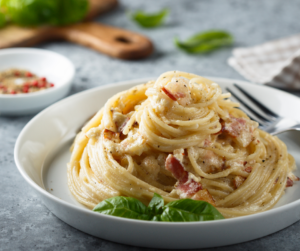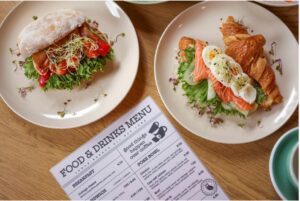Food Quality in Restaurant Operations
Continuing with the “back to basics” of restaurant operations, Quality Food is one of the pillars of restaurant operations.
Food Quality begins with freshness
Serving fresh product — at any price point — doesn’t cost anything. Whether it’s a frozen chicken tender or a Sushi-grade tuna loin, making sure the product is as fresh as possible will help ensure that the ingredient will be highest quality product it can be. A product that costs $1/lb will degrade the same way a product costing $25/lb will. In either case, you’ve got to maintain your time and temperature standards, and ensure product is rotated properly.
This means you need to adjust your par-levels regularly when placing your orders, and only buy what you need so ingredients do not spoil, or sit too long, in your cooler.
This also means that prep levels need to be adjusted to accommodate for any change in sales volume. Don’t over prep; over-prepping will lead to lower quality ingredients because you are pushing the limits of a product’s shelf life. Whether your operations call for a 5 day shelf life, or a 5 hour shelf life, make sure your restaurant isn’t constantly living on the edge of good and spoiled. The goal should be to serve fresh, wholesome, dishes rather than food that’s “not spoiled.”
Make less, more often.
Stick to your Standards
Adjusting recipes is not the place to start cutting costs. If you call for a certain cut of beef when sales are good, you should stick to the same cut when times get tougher. Same with the oils in your dressings, or fresh fruit vs. canned or frozen. Guests will notice the change in quality — either through taste or texture or both. Don’t change your specs or your standards.
Re-write your menu
 If you find your restaurant unable to achieve the suggestions above, it may be time to re-write your menu. Menus are a promise you’re making to your guests, and part of that promise is that your guests can expect consistent quality. If volume dictates you need to remove some items, or cost increases require you to change ingredients, it’s important to adjust the menu and make a new promise. Menus are engineered more than they are written — every ingredient matters and serves a purpose along with every other ingredient to achieve the ultimate objective. That objective, of course, is to run a profitable restaurant. Running a profitable restaurant is (nearly) impossible without controlling food quality.
If you find your restaurant unable to achieve the suggestions above, it may be time to re-write your menu. Menus are a promise you’re making to your guests, and part of that promise is that your guests can expect consistent quality. If volume dictates you need to remove some items, or cost increases require you to change ingredients, it’s important to adjust the menu and make a new promise. Menus are engineered more than they are written — every ingredient matters and serves a purpose along with every other ingredient to achieve the ultimate objective. That objective, of course, is to run a profitable restaurant. Running a profitable restaurant is (nearly) impossible without controlling food quality.
Train your staff
You’ll never be able to provide consistent quality if your staff isn’t properly trained. This means training on recipes, holding procedures, time and temperature requirements, plating and presentation practices. Your food is only as good as the training your provide the employees who are making it.
Salt & Cayenne is here to help you with any concerns or issues you make be facing with Food Quality. Contact us and we’ll evaluate your menu, your kitchen operations, and help re-engineer your menu.
Get More Info
or fill out this form and we’ll be in touch soon!
